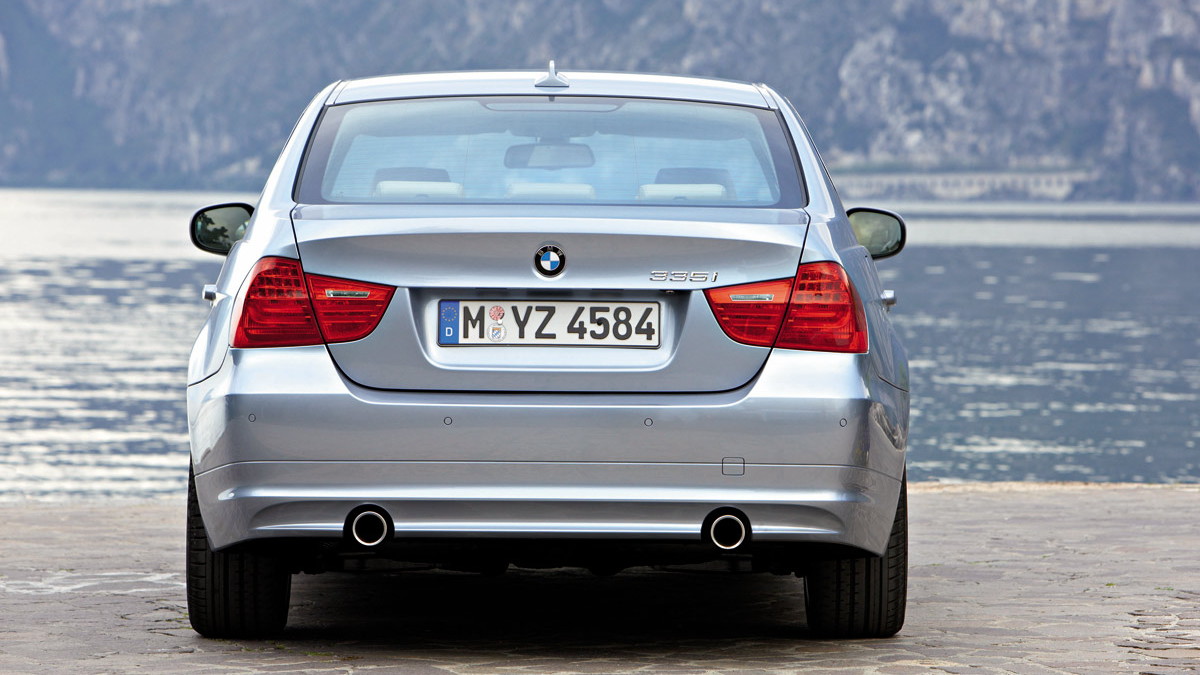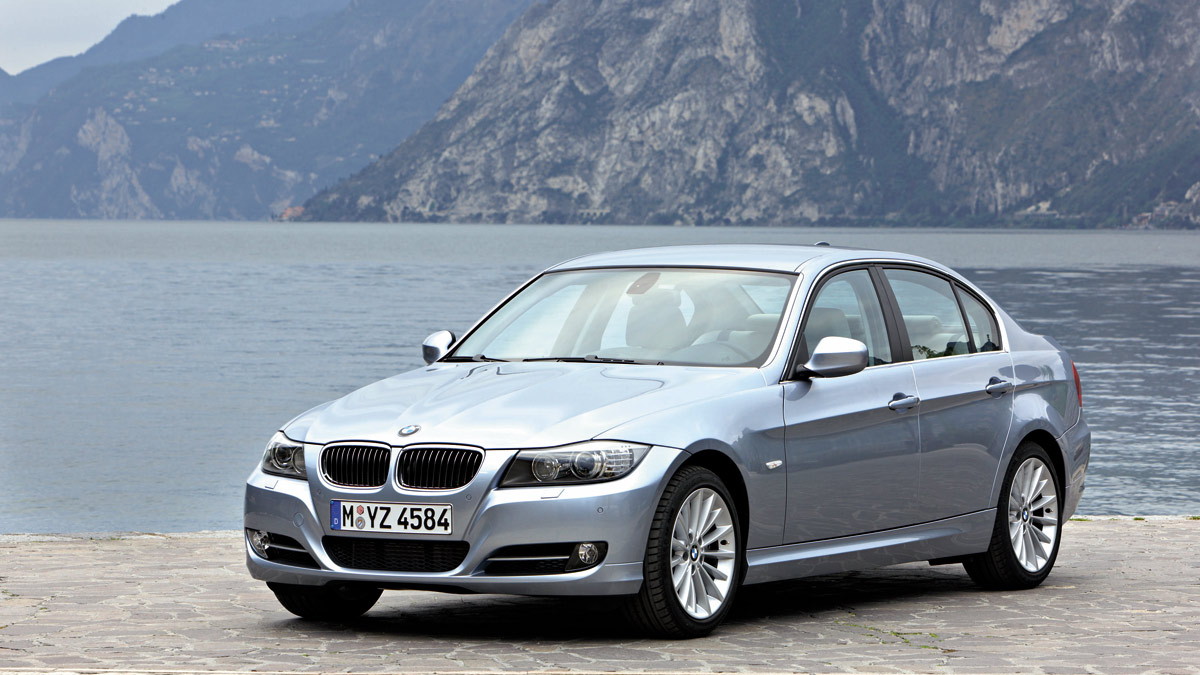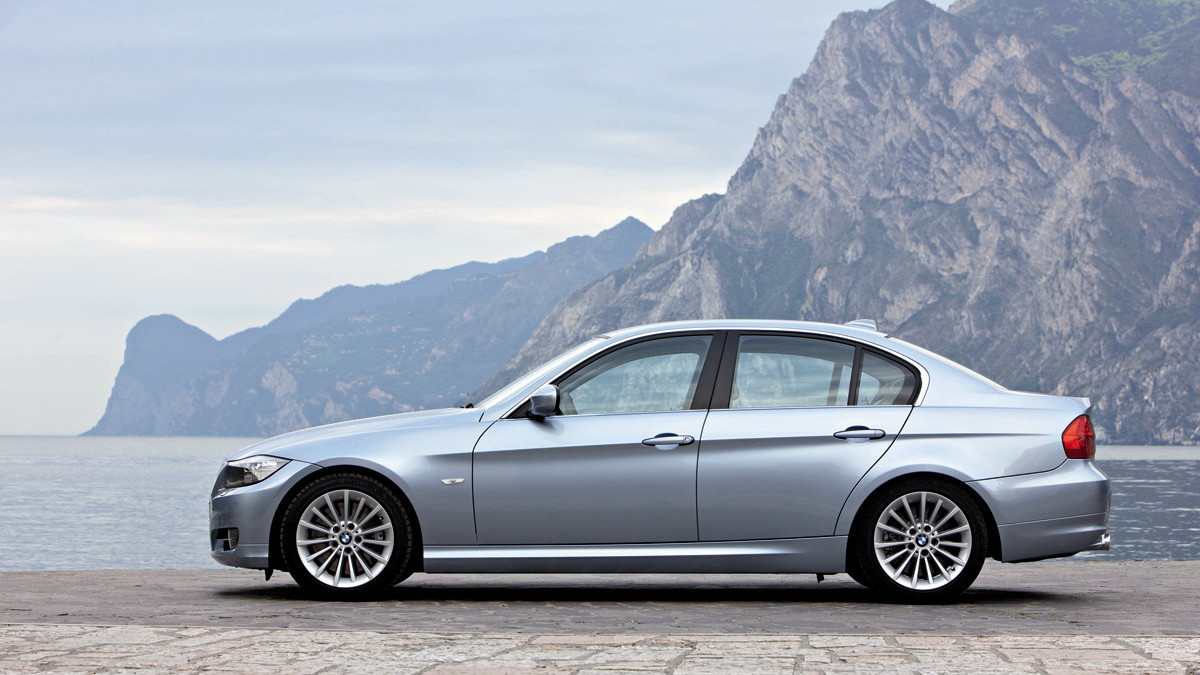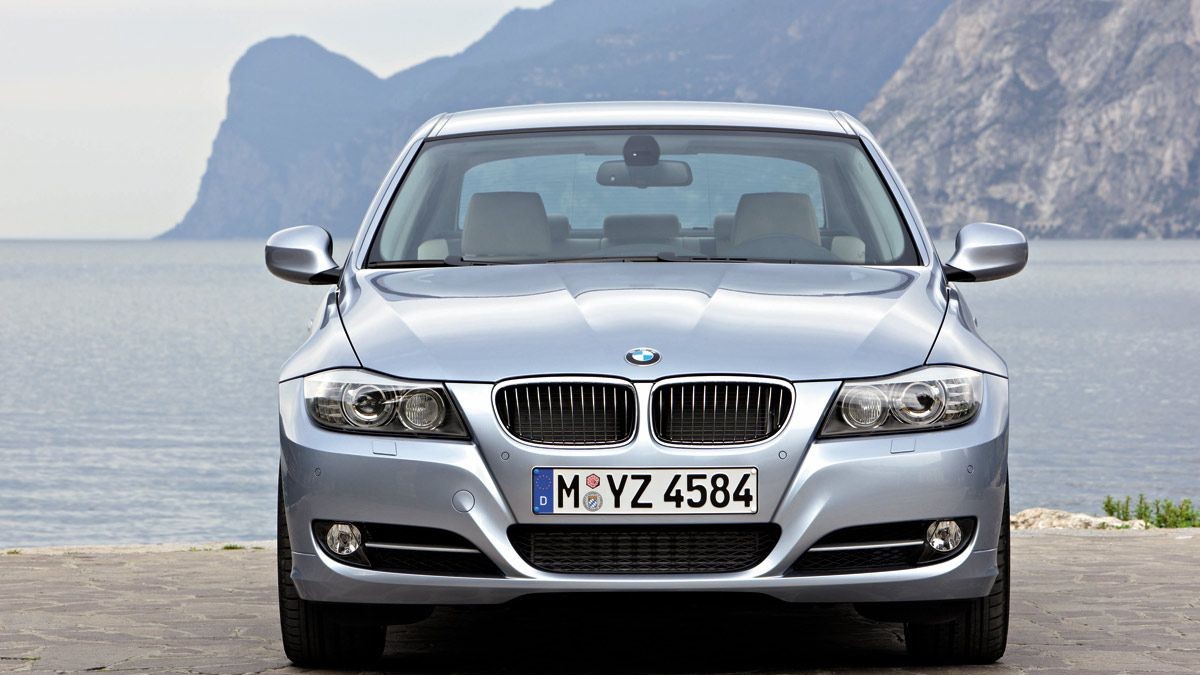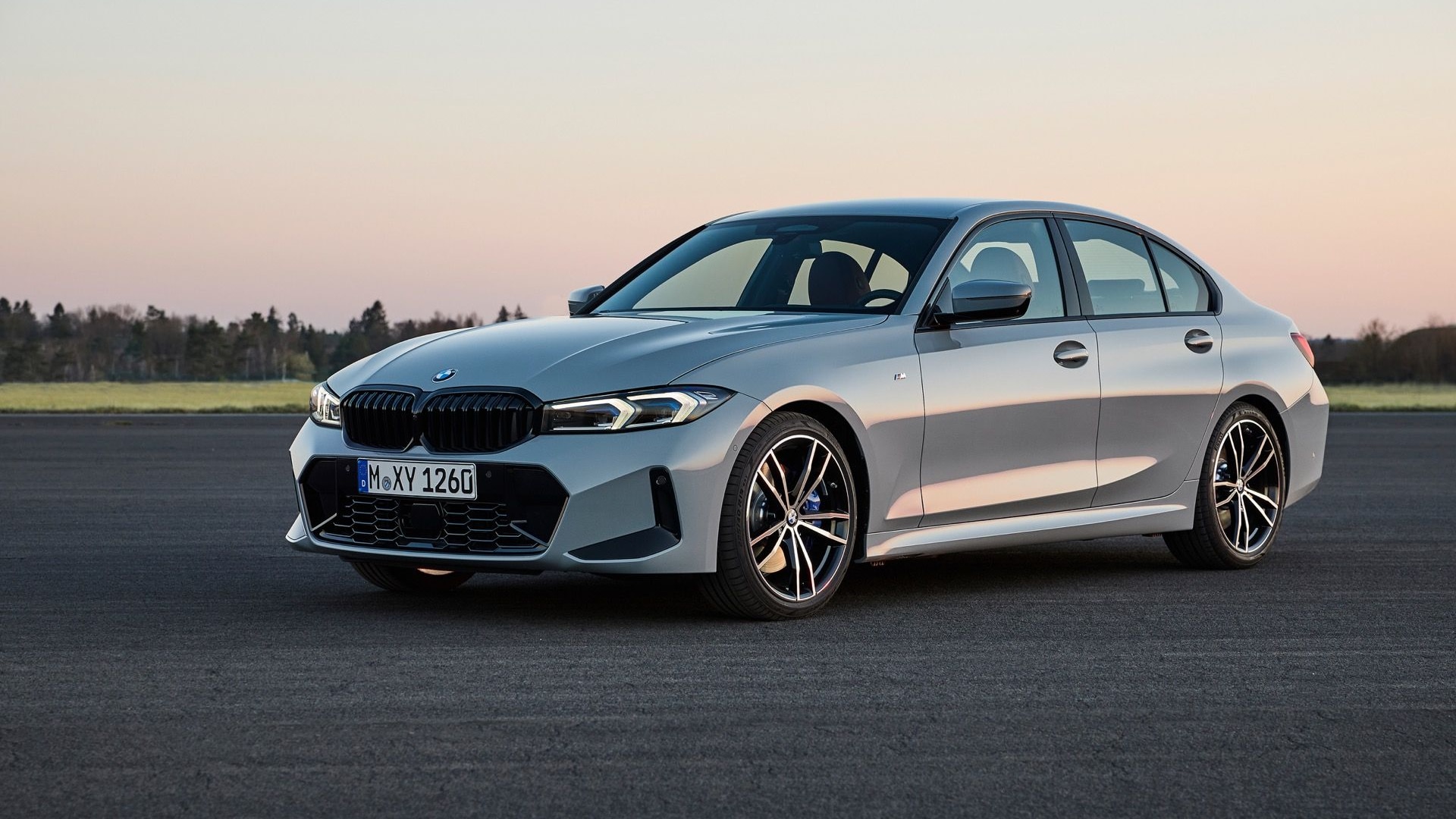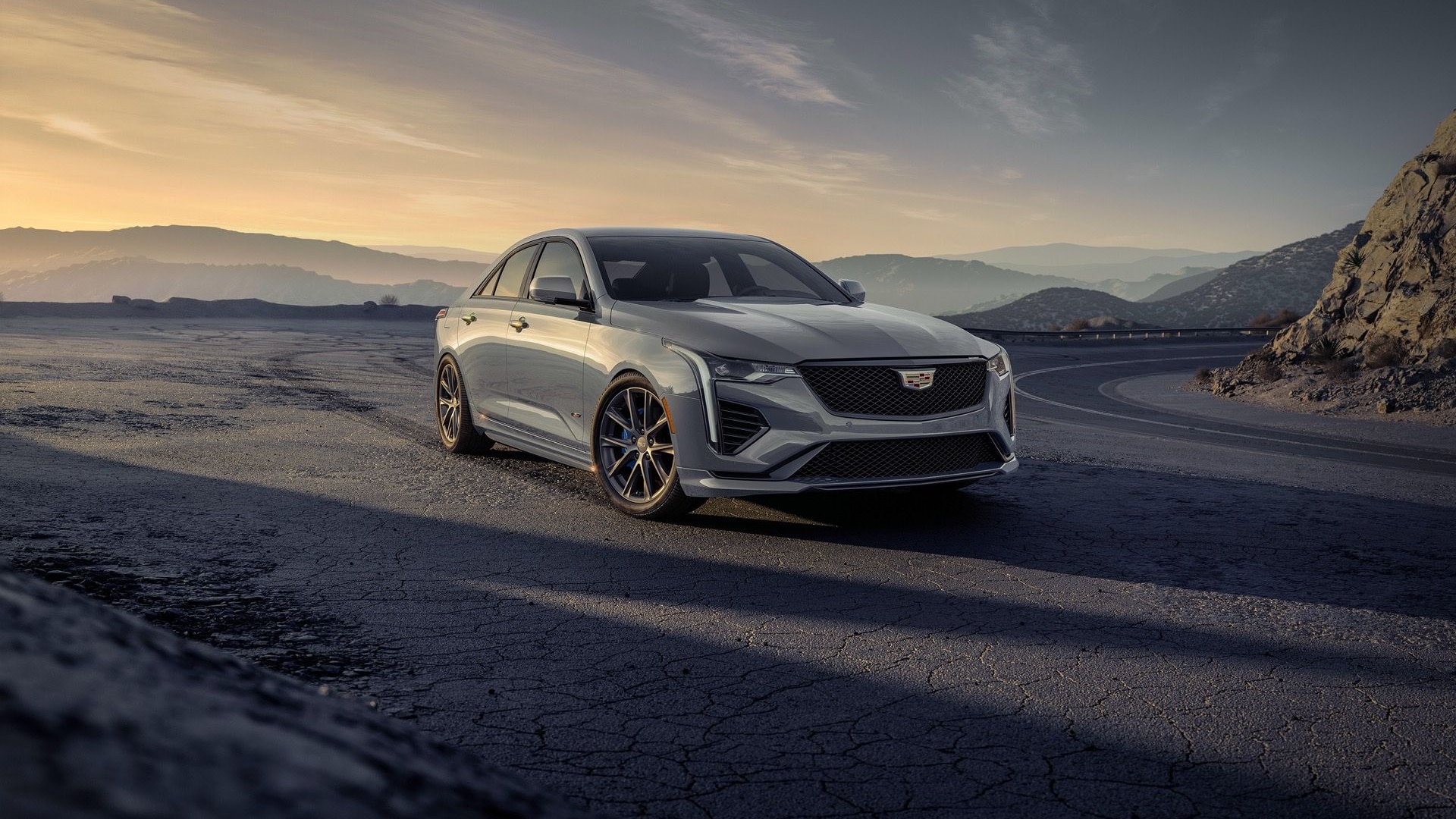The 335d will only be available in a sedan bodystyle and six-speed automatic transmission. The engine features BMW’s BluePerformance diesel technology, which combines advanced turbocharging, common-rail, piezo fuel-injection and exhaust filtering systems aimed at meeting strict U.S. emissions standards (the car will be offered in all 50 states). Displacing 3.0L, it produces 265hp (198kW) and peak torque of 425lb-ft (575Nm).
Original: The current generation E90 BMW 3-series has been on the market with only minor updates since 2005, however that’s about to change as the facelifted version of the car has just been revealed ahead of its world debut at the Paris Motor Show in October. The updates include a sportier look for all models, and in the case of the new 335i wagon, a sportier engine in the form of the twin-turbocharged six-cylinder shared throughout BMW’s lineup. North America will also see the introduction of its first BMW diesel with the launch of a new 265hp (198kW) 335d model.
The new cars are distinguished by fresh styling both at the front and rear, with some elements picked up from the recently revealed 7-series. According to BMW design boss Adrian van Hooydonk, the styling of the updated model attempts to emphasize the width of the car and incorporates a heavily profiled bumper, a newly contoured hood and reworked headlamps. Also new are the side mirrors, taillamps and a slightly revised bootlid. The rear track of the car has also been extended by nearly an inch on some models.
The interior gets a new look as well, with improved trim, a new center armrest and a second-generation iDrive system with four selector buttons for commonly used features such as the stereo. The iDrive system also gets a new 8.8in LCD display, and there’s an optional 80Gb hard drive music and navigation system as well.
A new range of drivetrain technologies have been added with the refresh, most aimed at improving fuel efficiency and emissions as Europe and the U.S. prepare to begin ramping up to their strict new standards.
The new features include brake energy regeneration, an auto stop-start function, electro-mechanical power steering, tires with reduced rolling resistance and automatic air intake flaps that open to let air in as needed, but otherwise stay closed to reduce wind resistance. Not all of these are applied to every model, but BMW has drawn from this array of options to help improve each model as part of its EfficientDynamics program.
An all-new inline six-cylinder diesel engine is going into the 330d, though it's not likely to be available in all markets. The 325d and 335d use the same basic engine with the same displacement, but with two turbochargers in 335d guise to yield power figures appropriate to the model.
Putting out 180kW (245hp) at 4,000rpm in the 330d, it generates characteristic diesel torque of 520Nm (385lb-ft) throughout the range from 1,750 to 3,000rpm. This much power and low-end grunt help the new 330d accelerate from zero to 100km/h (62mph) in 6.1 seconds and carry on to a maximum speed electronically limited to 250 km/h. Fuel consumption of the new diesel is a scant 5.7L/100km in the EU combined cycle, while its carbon dioxide output is 152g/km.
The four-cylinder engine in the 320d gets a boost of 5kW (7hp) and 10Nm (7lb-ft) of torque to end up at 130kW (175hp) and 350Nm (260lb-ft). Fuel efficiency remains unchanged at 5.7L/100km (38.5mpg US).
Where it is available, including the U.S., the 335d can only be had with the automatic transmission.
The facelifted 3-series is the first to feature BMW's new seven-speed dual-clutch transmission (DCT), arriving in the 335i Coupe and Cabriolet. The system allows for truly seamless shifts and uninterrupted power delivery, improving both the quality of the ride and the efficiency of the drivetrain. Three modes are available, including automatic, sport and manual.
To manage the interface with the driver, an all-new gear selector and shift plate have been designed for the system. In the centre console, the driver can select the mode or shift the car manually, which can also be done with the steering-wheel mounted paddles.
The net gain in performance is 0.1 seconds over the six-speed manual and 0.3 seconds over the automatic in the dash to 100km/h (62mph), but the high-tech transmission also enhances fuel economy by 5% in comparison the manual, cutting the figure to 8.8L/100km (26.7mpg US).
Launch control is also added with the DCT, enabling consistently fast take-offs with minimal wheelspin. The system adjusts the operation of the car's stability control system for the duration of the launch to allow the fastest acceleration possible.
The car will first go on sale in Europe and North America weeks after its debut in Paris this October.

